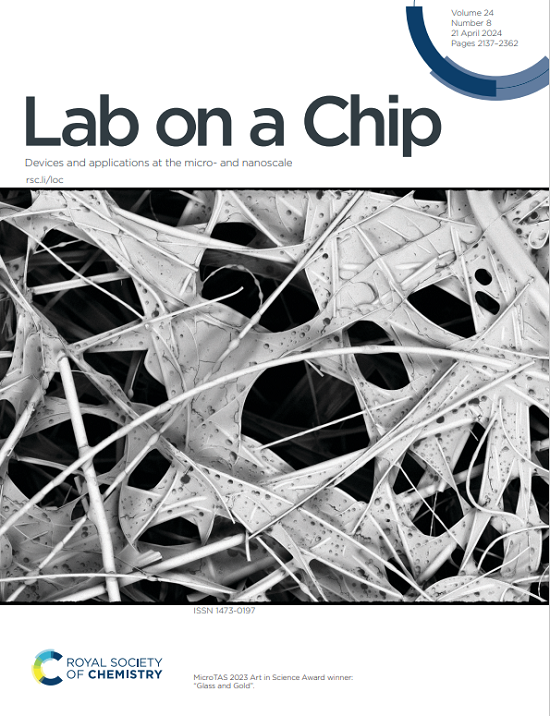高频毛细管波驱动的超小液滴吸入给药技术
IF 6.1
2区 工程技术
Q1 BIOCHEMICAL RESEARCH METHODS
引用次数: 0
摘要
吸入给药具有定位、靶向和快速反应等优点,已成为治疗肺部疾病不可缺少的方法。然而,目前的雾化方法产生的气溶胶的物理特性往往会影响药物输送的效果:大液滴分布,沉积在上呼吸道中。本研究提出了一种尺寸分布合适、便携、低能量和低成本的方法,利用千兆赫(GHz)声波诱导毛细波破裂雾化药物。设计了一种精密的微型雾化器,将GHz体声谐振器与半开放式微通道相结合,在低功耗下雾化雾滴的大小分布96%小于5 μm,超越了现有的方法。此外,该技术有助于雾化粘度高达5000 cP的液体。低通量肺模型的给药效率达到88%。小鼠体内试验表明,由于优化的液滴大小和通量,所提出的雾化器通过自主吸入在肺靶向递送方面的有效性。可调节的尺寸、广泛的雾化粘度范围、合适的通量、无泵操作和低成本突出了自主肺给药和针对小气道和肺泡的联合治疗的潜力。本文章由计算机程序翻译,如有差异,请以英文原文为准。
High Frequency Capillary Wave Enabled Ultra-small Droplets for Inhaled Drug Delivery
Benefiting from localization, targeting and rapid response, inhaled drug delivery has become an indispensable method for lung diseases treating. However, the efficacy of drug delivery is often compromised by the physical characteristics of the aerosol produced by current nebulization methods: large droplet size distributions, which is deposited in the upper airways. In this study, an appropriate size distributions, portable, low energy and low-cost approach is introduced to nebulize drug using capillary wave breakup induced by gigahertz (GHz) acoustic waves. A delicately designed miniaturized nebulizer is developed by integrating the GHz bulk acoustic resonator with semi-opened microchannel to nebulize droplets of optimal size for pulmonary inhalation, with size distributions that 96% are smaller than 5 μm at low power, that surpass existing methods. In addition, this technique facilitates the nebulization of liquids with viscosities up to 5000 cP. Low-flux lung models achieve 88% drug delivery efficiency. Murine in vivo tests demonstrate the efficacy of proposed nebulizer in lung-targeted delivery via autonomous inhalation, attributed to optimized droplet size and flux. The tunable sizes, broad range of nebulization viscosities, suitable fluxes, pumpless operation and low cost highlight the potential for autonomous lung drug delivery and combination therapy targeting both small airways and alveoli.
求助全文
通过发布文献求助,成功后即可免费获取论文全文。
去求助
来源期刊

Lab on a Chip
工程技术-化学综合
CiteScore
11.10
自引率
8.20%
发文量
434
审稿时长
2.6 months
期刊介绍:
Lab on a Chip is the premiere journal that publishes cutting-edge research in the field of miniaturization. By their very nature, microfluidic/nanofluidic/miniaturized systems are at the intersection of disciplines, spanning fundamental research to high-end application, which is reflected by the broad readership of the journal. Lab on a Chip publishes two types of papers on original research: full-length research papers and communications. Papers should demonstrate innovations, which can come from technical advancements or applications addressing pressing needs in globally important areas. The journal also publishes Comments, Reviews, and Perspectives.
 求助内容:
求助内容: 应助结果提醒方式:
应助结果提醒方式:


